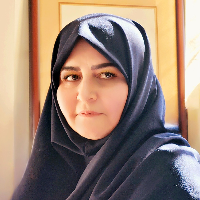A General Outlook on the Basics of Coloring in Traditional Iranian Arts (with Emphasis on the 4th to 6th centuries AH)
Colors have exceptional visual, semantic and mystical properties and are considered as the most significant tool for creating works of art. The concealed and inner meanings of colors in traditional coloring have remained unknown till today. In the art of creating traditional Iranian paint, functional elements have a distinct place and uniqueness. This research is pathway for the better understanding of traditional color-making and refers to the sciences in the Islamic tradition. Recognizing how color is used in art and its nature is a matter for reflection. Familiarity with the general principles of traditional Iranian painting is significant for the construction, promotion and revitalization of multifarious painting in Iranian traditional art. This research is completed via a descriptive and analytical method and relying on the data of library resources. The research findings indicate that the correct method of color-making in traditional Iranian art is based on previous instructions and its association with other sciences. Achieving how the methods of making the four elements, the four natures and the temperament qualities of each element in combination with the other component and how they are related, are the significant achievements of this research in the field of traditional coloring in Islamic Iran. The combination and generation of colors in the past was primary based on method of the four basics (thermal, wetting, compressible, pulverizable), the four elements of nature (fire, air, water, soil) and the temperament of the elements (warm, cold, wet, dry). The quality of the application of such colors and their nature are observable in the illustrated versions of the 4th to 6th centuries AH.
1. Understanding the general principles of traditional Iranian painting 2. Recognizing the main colors in the coloring cycle of traditional Iranian art.
Research questions:
1. What are the general principles of traditional coloring in Iranian art? 2. What are the main colors in the Iranian painting cycle and what is the basis of the combination of these colors?
-
Thematic and Visual Analysis of Three Painted Stories of Ashura (Distorted Incidents) in the Lithographic Manuscript of Asrār Al-Shahādah (1851) Kept in the National Library
Fatemeh Asgari, *, Seyed Abutorab Ahmadpanah
Journal of Theoretical principles of Visual Arts, -
"Analysis of the Decorative Forms and Patterns of the 15th Century Valencia Albarellos in Spain Preserved in the Metropolitan Museum of Art in New York"
Mahdiyeh Hashemi *,
Islamic Art Studies,



